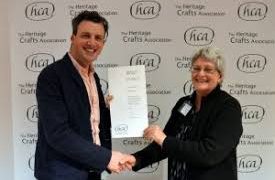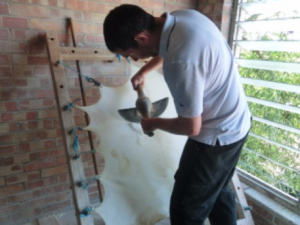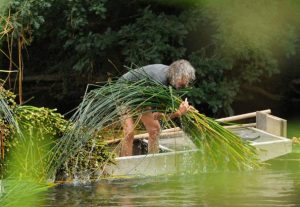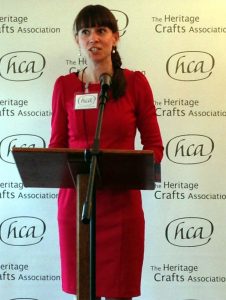Nominations open on 1st September 2018 for Maker of the Year, one of five prestigious awards awarded annually by the Heritage Crafts Association in recognition of people working in traditional skills. Craftspeople can also apply for, or be nominated for, HCA/Marsh Trainer of the Year, HCA/Marsh Volunteer of the Year, the HCA/Marsh Heritage Crafts ‘Made […]

Basket maker Hilary Burns has been named Maker of the Year in the 2018 Heritage Crafts Awards. Hilary won the award in recognition of her work on numerous projects that have put British basket making and heritage crafts at the centre of public consciousness.
Winner of the 2018 HCA/Marsh Trainer Award Kathy Abbott, who was awarded the Marsh Trainer of the Year, has been a bindery manager at an antiquarian booksellers for over eight years, while also working as a part-time tutor, a partner in a bookbinding company, a founder member of an international bookbinding collective, and exhibiting widely. […]

The Heritage Crafts Association is delighted to report that one of the seventeen critically endangered crafts identified in the Radcliffe Red List for Endangered Crafts is looking for a new trainee. William Cowley Ltd., maker of high quality parchment and vellum, is looking for an additional employee to ensure that craft skills which have been passed down through the generations are continued into the future.

Heritage crafts have received royal recognition and high honour with three craftspeople – Wim Visscher, Felicity Irons and John Lord – included in The Queen’s Birthday Honours Lists this year.

Speech delivered by Greta Bertram, HCA Secretary, at the launch of the Radcliffe Red List of Endangered Crafts, 3 May 2017 at the House of Lords.